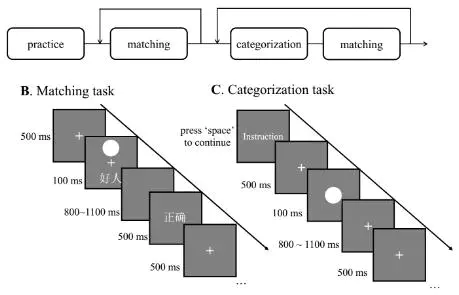Good me bad me:Does valence influence self-prioritization during perceptual decision-making?
 Image credit: Fig1
Image credit: Fig1
Abstract
People display systematic priorities to self-related stimuli. As the self is not a unified entity however, it remains unclear which aspects of the self are crucial to producing this stimulus prioritization. To explore this issue, we manipulated the valence of the self-concept (good me vs. bad me) — a core identity-based facet of the self — using a standard shape-label association task in which participants initially learned the associations (e.g., circle/good-self, triangle/good-other, diamond/bad-self, square/bad-other), after which they completed shape-label matching and shape-categorization tasks, such that attention was directed to different aspects of the stimuli (i.e., self-relevance and valence). The results revealed that responses were more efficient to the good-self shape (vs. other shapes), regardless of the task that was undertaken. A hierarchical drift diffusion model (HDDM) analysis indicated that this good-self prioritization effect was underpinned by differences in the rate of information uptake. These findings demonstrate that activation of the good-self representation exclusively facilitates perceptual decision-making, thereby furthering understanding of the self-prioritization effect.